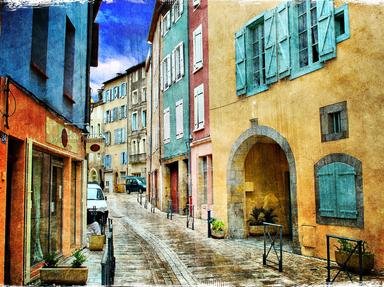Quiz Answer Key and Fun Facts
1. The Temple of Aman-Re in Karnak, Egypt does/did NOT have this feature:
2. Why is most surviving Classical Greek sculpture made of marble?
3. The commemorative column at Trajan's Forum stood where?
4. Why was the subject of the crucifixion avoided by most Early Christian artists?
5. In San Vitale at Ravenna, Italy, there is a mosaic of a man wearing a crown, surrounded by 10 men, with a nimbus encircling his head. Who is this man?
6. The goal of Islamic artists/architects was:
7. A Chi Rho Iota manuscript page, containing trumpet spirals and elements of horror vacui, would most likely be produced by:
8. The Torhalle was built during which era?
9. Saint-Etienne, in Caen, is what type of church?
10. Which is NOT true of the Arena Chapel in Padua, Italy?
11. Who painted the 'Arnolfini Wedding Portrait'?
12. This sculpture was originally supposed to be positioned atop Brunelleschi's dome of the Florence Cathedral:
13. The purpose of Masaccio's 'Tribute Money' can be best described as?
14. Which of these artists never produced a piece of art that is categorized under Mannerism?
15. Pieter Bruegel the Elder's "Hunters in the Snow" can be best described as which type of painting?
16. How does Hals' "Archers of St. Hadrian" differ from earlier Dutch portraiture?
17. Which of the following is not a Baroque piece of art/architecture?
18. Which of the following is NOT true of Rococo art?
19. Neoclassicist Jacques Louis David did NOT paint:
20. Which of the following is true of Goya's "Third of May, 1808"?
21. The architectural reform known as "Haussmanization" took place in which city?
22. Tahitian women were a common subject for this Post-Impressionist painter:
23. Piet Mondrian started the artistic movement known as:
24. Which of the following art movements started first?
25. In Lichtenstein's "Blam!", which soldier is depicted as a vengeful, murderous, villain?
Source: Author
irishguyjay
This quiz was reviewed by FunTrivia editor
thejazzkickazz before going online.
Any errors found in FunTrivia content are routinely corrected through our feedback system.
